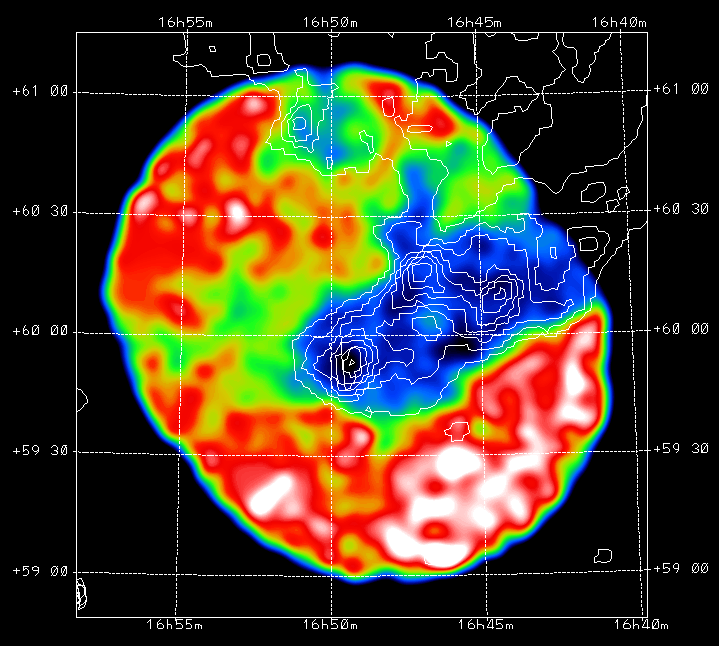Draco Nebula

This image shows a ROSAT PSPC false-color image of the deepest portion of the soft X-ray shadow of the high latitude cometary cloud known as the Draco nebula. The Draco nebula is indicated by the contour lines, which are from a 100 micron map of this region made by the infrared IRAS satellite. This is an updated version of the image published in Nature in 1991 (Burrows & Mendenhall, Nature, Vol. 351, p. 629, 1991), which announced the discovery of the first soft X-ray shadow following over 20 years of unsuccessful observations. This discovery was made possible by the excellent imaging quality of the ROSAT satellite, a German/US X-ray telescope launched in June 1990.
The image shown here was made from X-rays with energies between 100 eV and 300 eV. Since these soft (low energy) X-rays are absorbed rather easily by interstellar dust and gas, the observation of a shadow provides an indication of the intensity of X-rays coming from behind the absorbing cloud. X-ray "shadows" like this are the X-ray analog of well-known optical dark nebulae such as the Horsehead Nebula, produced by absorption in a dark cloud of optical photons emitted in a bright nebula behind the cloud. In the X-ray case, the entire sky is bright with a diffuse glow known as the diffuse X-ray background (somewhat like the night sky as seen from a modern city, where scattered light from street lamps produces a bright glow in the sky and washes out all but the brightest stars). The diffuse X-ray background in this energy band is believed to be produced by hot gas (T ~ 1 million degrees Celsius) that has been heated by supernova explosions at some time in the distant past (perhaps as much as a million years ago). However, this observation proves that nearly 2/3 of the X-rays in this direction come from beyond this cloud, which is at least 900 light years from the Sun and at least 600 light years above the disk of the Milky Way Galaxy. This provides the first direct observational evidence for the existence of million degree gas in the galactic halo, which was first postulated by Lyman Spitzer in 1956.
This work was done by Dr. David Burrows and graduate student Jeff Mendenhall of the Penn State Department of Astronomy & Astrophysics.
![]() Link to Dr. David Burrows'
X-ray shadows page.
Link to Dr. David Burrows'
X-ray shadows page.
Curator:
HEASARC Guest Observer Facility
Please use the Feedback link if you have questions on ROSAT.

